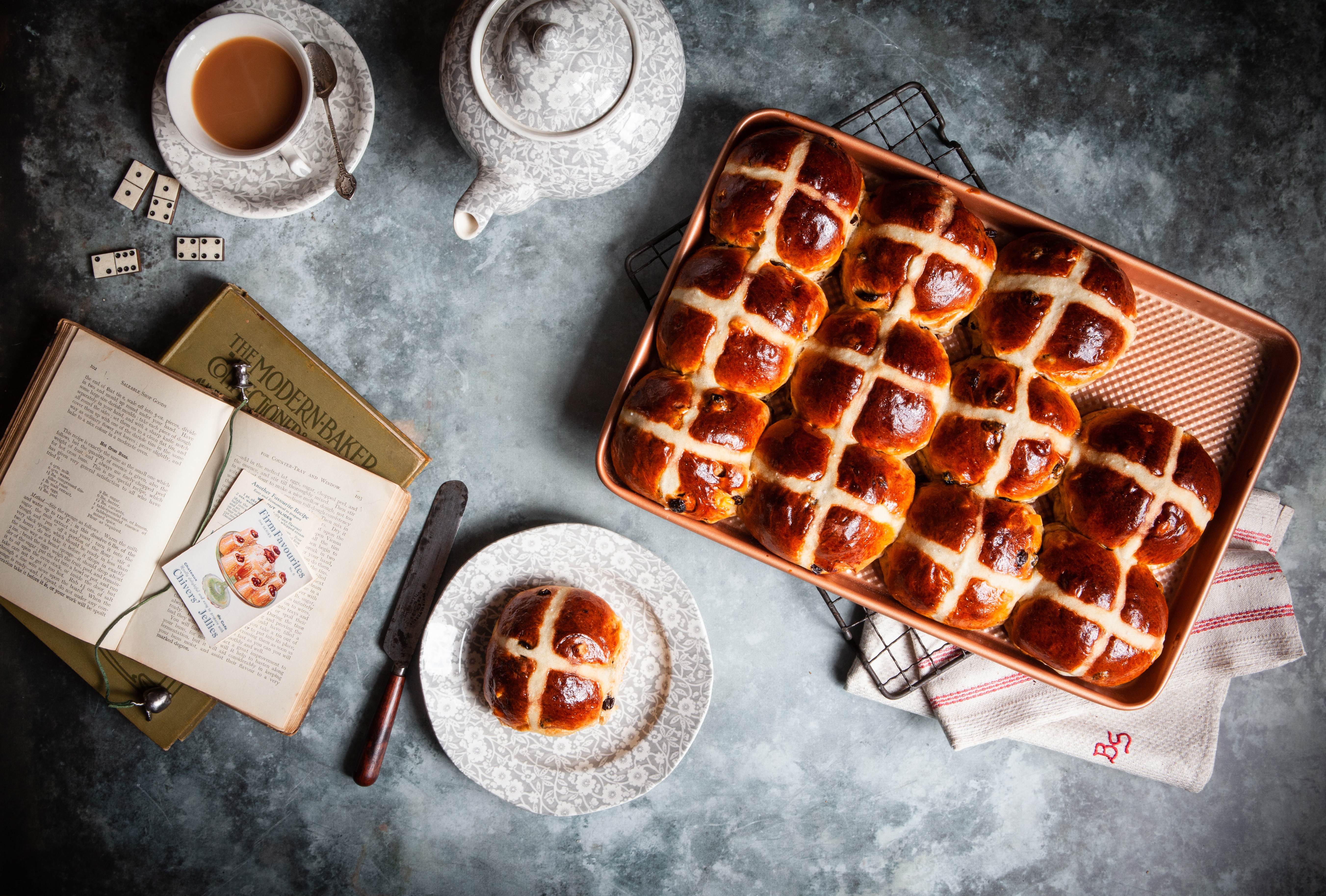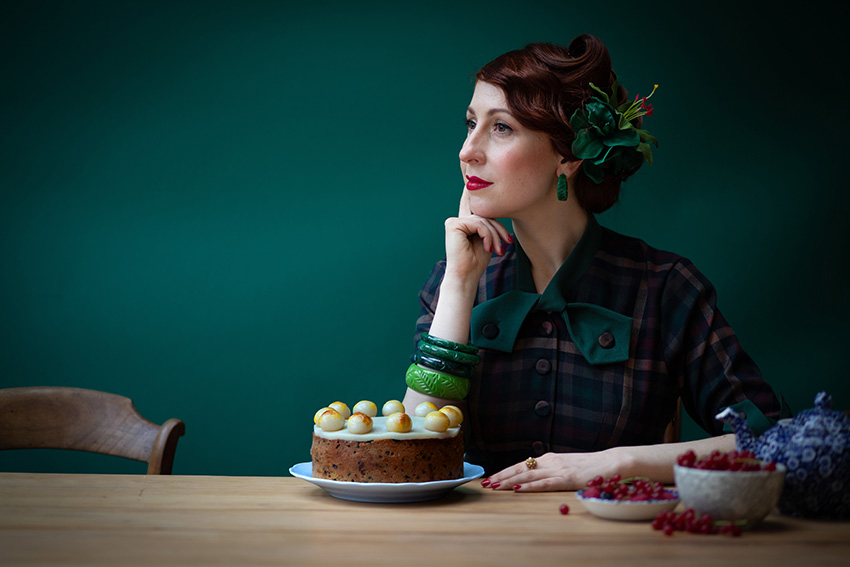Goede Vrijdag.
(For my foreign readers, I am planning episodes in English, watch this space)
In deze tweede aflevering van mijn podcast heb ik het over de gebruiken rond Pasen in Groot Brittannië.
Ik spreek over Hot Cross Buns, Saffron buns en Simnel cake. Hieronder vind je het recept voor Hot Cross Buns uit mijn ‘Brits Bakboek’ (Oats in the North, Wheat from the South). De recepten voor de Saffron Buns en de Simnel cake vind je eveneens in mijn boek. Vergeet je niet in te schrijven voor mijn nieuwsbrief in de rechter kolom. De podcast is te vinden op alle gebruikelijke platformen, inclusief Spotify. Hier is ook een handige link >
Hot Cross Buns
What you will need
15 g (½ oz) dried yeast
300 ml (10½ fl oz) lukewarm full-fat milk
500 g (1 lb 2 oz) strong white bread flour
60 g (2¼ oz) raw (demerara) sugar or white sugar
1 tsp ground cinnamon
½ tsp ground mace
¼ tsp ground nutmeg
1/8 tsp allspice
1/8 tsp ground ginger
1/8 tsp ground coriander
70 g (2½ oz) butter, at room temperature, cubed
1 egg
5 g (1/8 oz) fine sea salt
150 g (5½ oz) currants
50 g (1¾ oz) candied citrus peel
2 egg yolks + 2 tbsp milk, for egg wash
For the crosses
140-160 ml (5¼ fl oz) water (if your flour is old it needs more water, if fresh 140 will be enough)
75 g (2½ oz) plain (all-purpose) flour
For a 39 x 27 cm (15½ x 10¾ inch) baking tin (if you don’t want the buns to attach to one another while baking, use a larger tray or bake in two batches)
For the shiny glaze:
Melt 60 g plain white sugar in 5 tbsp water
Method:
Add the yeast to the lukewarm milk and stir briefly and gently to activate it. The yeast will start to foam up in clusters, which means it is ready for use. Combine the flour, sugar and spices in a large bowl or the bowl of an electric mixer fitted with a dough hook and put the butter on top. Pour half of the yeast mixture over the butter and start kneading. When the milk and butter are completely absorbed, add the rest of the yeast mixture, along with the egg. Knead for 5 minutes, then let the dough stand for a few minutes (at this point it will be very wet). Add the salt and then the currants and candied peel and knead for 10 minutes, scraping the dough off the dough hook and side of the bowl if needed, until the dough has come together in a smooth and elastic dough that is not too dry but also not terribly wet.
Cover the dough and set aside for 1 hour until it has doubled in quantity.
Meanwhile, line the baking tin with baking paper. Mix the water and flour into a thick batter for the crosses and scoop it into a piping bag with a small nozzle and cover until needed.
Divide the dough into 12 equal pieces. Take a piece of dough and lightly flatten it on your work surface, then pull the outer parts in like a purse and gently squeeze together like a dumpling so that the dough can no longer split open while rising.
Turn the dough over so the squeezed ends are on the bottom. It should be nice and smooth on top – if not, flatten it and start again. Place in the baking tin and continue shaping the other buns, adding them to the tin to form neat rows.
Cover the tray of buns with a light cotton cloth and wrap it in a large plastic bag (I keep one especially for this purpose). Rest the dough for 1 hour or until the buns have doubled in size. Towards the end of the resting time, preheat the oven to 210°C (410°F).
Brush the buns generously with the egg wash, then carefully pipe a cross onto each bun. Transfer to the oven and bake for about 20-30 minutes until golden brown. (if you don’t want to egg wash, just brush on the sugar syrup as mentioned in the recipe, or do both!)
The buns are best eaten on the day they’re made. The next day they can be revived in a hot oven for a few minutes. You can also freeze the baked buns, thaw and then pop them in a hot oven for a few minutes.
These buns are excellent halved, then toasted and spread with copious amounts of farmhouse butter.












Leave a Reply